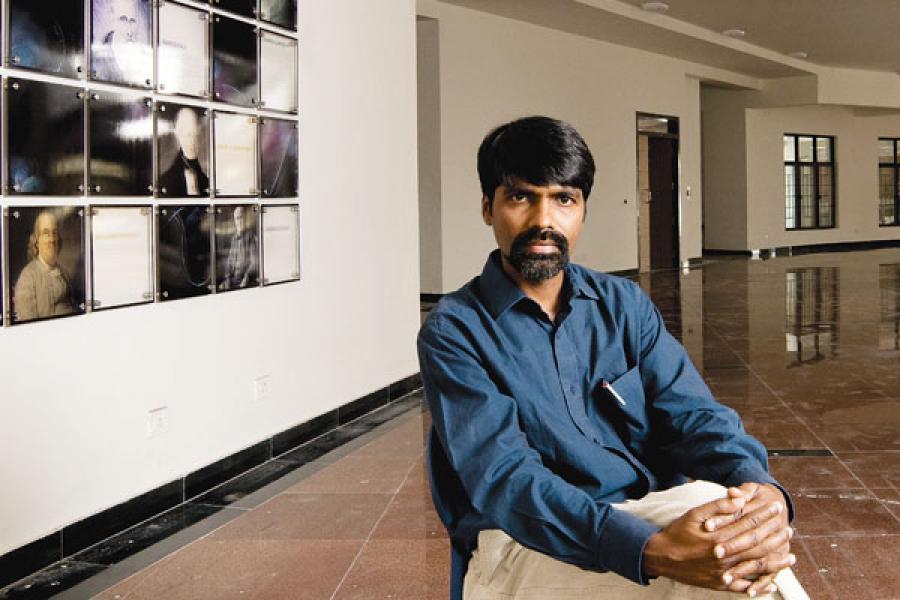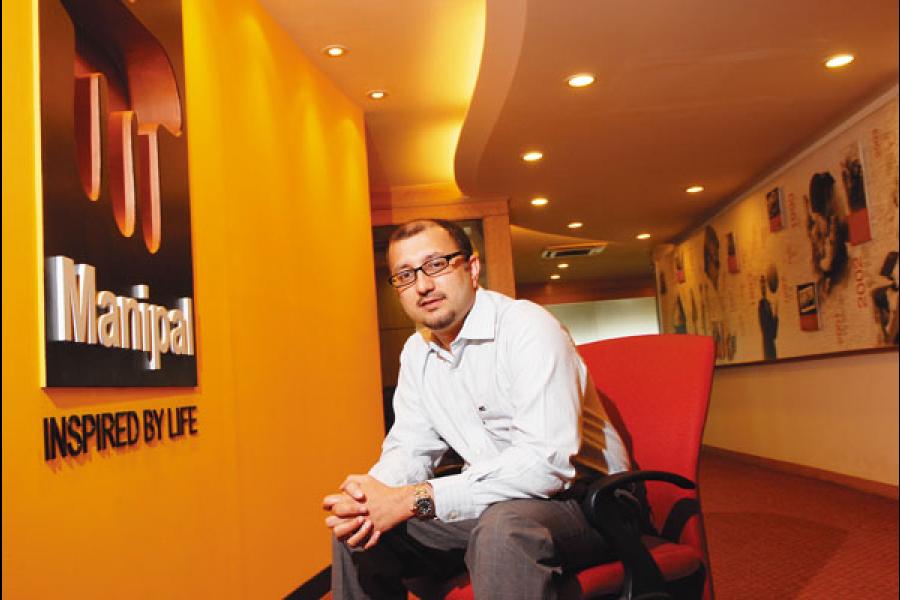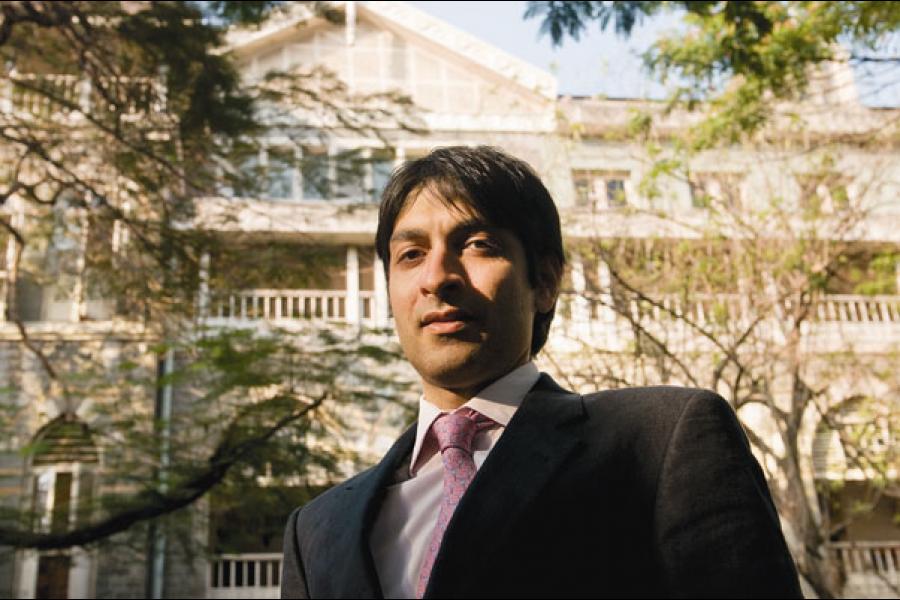
The Business of Schools
Krishnan Ganesh, chairman and founder of TutorVista.com, an online tutoring company, is a serial entrepreneur with a nose that can sniff out new opportunities very early. In 2002, he and his wife Meena sold their call centre business, Customer Asset, to ICICI for $20 million. His investment in the next business, Marketics (a data-analysis start-up) fetched him a good return too (he sold it to Business Process Outsourcing firm, WNS, for $65 million).
The opportunity for the business of education in India is huge. India has the world’s largest population of school going children (over 200 million). Indians also spend a lot of money on education. “School education forms the second most important spend item on an Indian family’s list, just after food and grocery. In US it is seventh,” says Ganesh. But it won’t be easy for him.
Education is a difficult business to build scale; there are hardly any businesses of scale in this sector, in India or elsewhere. There are only 75,000 private schools in India, and only a handful — like Delhi Public School (DPS) — have managed to cross 100 locations.
A key reason for that is schools are a not-for-profit pursuit by law. And with reason — education needs to be inclusive. Human Resource Development Minister Kapil Sibal has minced no words in letting the whole world know that as long as he stays minister, those seeking to make profits out of schools can take a hike.
So, schools in India are required to be set up by charitable public trusts which cannot take out surplus money out of the institution. As a result, there is hardly any venture capital investment that has gone to setting up schools in India. According to a research report published in January 2009 by IDFC SSKI, only $180 million of private equity investment has taken place in the formal education sector. This includes the entire gamut — from playschools, to coaching classes, online tutoring and digital content for schools.
Yet, Ganesh is not the only entrepreneur venturing into the business of schools. In 2007, Shantanu Prakash of Educomp Solutions started The Millenium School which has plans to set up 100 schools, and in 2007 Career Launcher’s founder, Satya Narayanan R., started the Indus World School. Today Indus World has 12 schools across India, and aims for 100 schools by 2014.
Why are so many entrepreneurs interested in this business, despite the constraints?
Karan Khemka, who heads Parthenon Mumbai (a global strategic advisory firm), lists five reasons why schools are such an attractive business: “There is more demand than supply, there are high barriers to entry, school fees rise higher than inflation, there is high visibility of revenue, and finally it works with negative working capital [since a school collects fee in advance]. No other business has these characteristics. It is better than IT, investors are dying to get in.”
And each one of these entrepreneurs has a blueprint for how to build a significantly large chain of schools.
Cracking the Code
Schools in India can only be owned by a not-for-profit trust or society or the government. With over a million public schools, the government runs the largest number of schools in the country. DPS is run by a not-for-profit trust.
Most businessmen and investors blame the law for creating pygmies in the sector. Their reasoning is that the absence of clear profit making structures make it difficult to raise and deploy capital across schools, which makes it difficult for them to scale this business.
A school is a capital-intensive business. In a metro, setting a school for 1,000 children on a 2-acre plot could cost anywhere between Rs. 15 crore to Rs. 25 crore (including land and buildings).
The simplest way to raise money is through equity, but no private investor wants to invest money in a not-for-profit trust. This is why the entrepreneurs getting into the business have created two legal structures. A trust that runs the school and books all the expenses, and a company that owns all the assets — land, building, management and technology — and leases it to the trust for a fee.
Almost every new entrant into the school business is using this twin structure to set up a school with minor variations. Some use it for setting up new schools; others have used this route for working with existing trusts and schools.
While Career Launcher’s Satya Narayanan has set up new schools in Tier 2 and Tier 3 towns, Ganesh of Manipal K-12 is tying up with trusts which had set up schools (and owned the land and buildings) but were struggling to run the schools better.
Manipal K-12 gets into a management contract with these trusts — for a fee, Ganesh’s company runs all aspects of the school starting with appointing the principal, the faculty, teacher training, curriculum design, running the ICT (information and communication technologies) class, and so on. In return, the trust pays him anywhere between 20-80 percent of the school fees it collects from parents (depending on what investments Manipal K -12 is willing to make).
Ganesh says it’s the best way to build scale, since Manipal does not have to invest in expensive land and building. In five years, he hopes to sign up 100 schools across the country. Each will be co-branded as Manipal, which is already a recognisable name in education.
The key here, says Satya Narayanan, is to build scale and ramp up the model in as short a time as possible. Satya Narayanan raised about $10 million for Career Launcher from Gaja Capital, part of which is going in setting up the schools business. Schools bring in revenue of about of $4 million and are yet to start making profits, he says.
Narayanan’s Indus World runs schools in Tier 2 cities like Amritsar, Gurgaon, Bhiwani, and Raipur where the fee ranges between Rs. 1,500 and Rs. 6,000 per month. While five of these schools are owned by him, the rest are in partnerships with real estate companies who lease the land to him to build a school in a residential project that they are building.
For example, he has tied up with Shriram Properties to set up 25 schools in residential projects being developed by it. It’s a win-win situation for both. A school inside a residential complex helps the builder sell his property faster and provides Narayanan with good real estate.
Is management services contract then the way to go? Some think it is.
Sandeep Aneja, of private equity firm Kaizen, which raised a fund of $150 million for investing in education, says given the current regulatory structure in India, it is a good way to build a scalable model. He says his firm will soon announce an investment in a company which has a similar structure.
Not everyone agrees. Investors and analysts say that it is still not a clean corporate structure. While the law has so far allowed schools to function this way, there is no guarantee it will be continue to do so.
As far as Manipal K-12 is concerned, Ganesh says there are no violations of any law because he takes over existing schools.
Ganesh’s competitors say that the risk here is that only the schools that are struggling will look at this model. The good schools, which have the reputation and the staff, are not interested in partnering with entrepreneurs in this model.
That may be so, but Ranjan Pai, CEO of Manipal Education and Medical Group doesn’t see it that way. “How many students can get into these elite schools? We are a country of a billion people, how many elite schools can we create? You need mid range schools in this country. The entire IT boom was created by tier 2 and 3 colleges. You can’t be elitist in this country, you need good quality but you also need scale.”
Patience Capital
In 1998, when Kavita Sabharwal dropped out of the MBA programme at Harvard and went back to her dad’s business, the $600 million Lupin, she had no idea that one day she would start a preschool.
In 2005, frustrated by her attempts to find a good preschool for her son, Sabharwal set up Neev in Bangalore. Today Neev, a kindergarten school for ages two to six, has four branches in Bangalore. It charges an annual fee upwards of Rs. 1 lakh a year (most others charge one fourth of that). Sabharwal now wants to take Neev to other cities like Mumbai and also extend it to higher classes. Her first concern is raising money. Neev was funded by her own money but Sabharwal says she needs Rs. 20 crore to Rs. 25 crore for each full-fledged school she sets up. Four such schools would need at least Rs. 100 crore in capital investment.
She has received feelers from venture capital and private equity firms, but is not convinced that is the best way to raise money. They look for quick returns in three to five years, while this business is for the long haul, she says. Establishing a brand takes years. Her only choice then is to take debt to finance her expansion or fund it through her own money.
Raising money and working around regulations is a serious worry for entrepreneurs, but there are other complexities as well.
Sawal Jethani, is a trustee at Vibgyor High, which runs about five schools across cities like Baroda, Pune, Lucknow, Mumbai and Bangalore. He says, “Any other business in this country will have the same rules and regulations across the country. Telecom, retail will have one centrally controlled policy making body. The only thing that will differ is tax. When it comes to education everything is different”. For example, while the syllabus is set by the board (like Central Board of Secondary Education, for instance) that the school is affiliated to, individual states can dictate the maximum fee that a school can charge, insist on the local language as the medium of instruction and restrict the distance that a child has to travel to get to school, limiting a school’s market to the neighbourhood.
You won’t get economies of scale if you run schools across the country. “Only 20 percent of the costs will be common across all schools, like curriculum, management overheads and so on. The rest is all local,” says Jethani. At best, schools in the same city can perhaps share the transport company and a central cafeteria.
It is this local nature of the school business that also means that a standalone school could continue to flourish for a long time. “Eighty percent of the kids in a school will come from a 5-7 km radius, so how many more schools can you put in the same location? After all, land inside the city is extremely hard to find,” says Jethani.
Which is why, the school business will be one that grows slowly. For instance, the biggest challenge in the Manipal K-12 model, says Pai is getting the right principal, who he thinks is crucial for a school’s success. Finding 300-400 good principals to manage new schools is a difficult task. So, Manipal K-12 is looking at only 100 schools in its first five years.
In a stable state, a school earns net margins of 25 percent, which makes it an attractive business on a per unit basis. But revenues from a school tend to be low (Rs. 3 crore for a school of 1,000 children charging an annual fee of Rs. 30,000 per child). Which means, to build a company of size, an investor needs to look at at least 500-1,000 schools.
That is quite a task. “In India no one knows what model will work” says Aneja of Kaizen. “Even globally there is no billion dollar company running schools,” says Khemka.
“If you are talking about a commercially viable scaleable model, I would look at the mid-segment where there are 35-40 kids a class with one teacher. There the breakeven is three to four years,” says Abha Adams, a Delhi-based an education consultant.
Entrepreneurs like Narayanan believe that in time we will get there. It has not been done anywhere in the world, because no one else has India’s scale. Plus, in developed countries it is the government which has stepped in to provide education to the masses. In India, government schools have failed to do that. “Even my driver’s son goes to a private school,” says Ganesh.
Narayanan says that just like in telecom, retail and health care, in education too the government will change regulation and allow profit making because “it is the only way to solve the problems in the sector today”. Once that happens, he says it will be entrepreneurs who will create profitable, scalable models serving the masses in the country.
“There is no doubt in my mind, that in the next five years we will have a chain of 1,000 schools in this country and it will be done by an entrepreneur” says Narayanan. Khemka of Parthenon says that the industry will really take off when large corporate houses in India enter the fray.
“The only way I see scale in this business is through the endowment route where large wealthy patrons set aside patience capital to build quality institutions,” says Anurag Behar, co-CEO, Azim Premji Foundation.
Till that happens, entrepreneurs should treat this as a “spiritual return on capital” says Kavita Sabharwal.
(Additional reporting by Malini Goyal)
(This story appears in the 16 April, 2010 issue of Forbes India. To visit our Archives, click here.)
-
 Ravi Shanker
Ravi ShankerThis is a great article. In fact india offers lots of opportunities in field of education. http://opportunityineducation.blogspot.com/
on Sep 24, 2011 -
 Spline
SplineIf you look at this commentary objectively, there are broadly 2 positions that can be taken(excluding regulatory ambiguity).<br /> Position one which is "technology is the SOLUTION" and the answer to scalability and Position two which categorically denies that technology can EVER replace a teacher as the way forward.<br /> There is room for both depending upon the goal of the "educationist".<br /> An afterthought, please don't use "standard" and "education" together. We are in the 21st century!
on May 19, 2010 -
 Rashmi shah
Rashmi shahWhy is no one talking of technology.<br /> Scalability is only possible using technology with statndard education.<br /> Merely building structure without standard / good faculty will be disaster. Mind set has to change to accept education thro' DTH.<br /> and here will come the role of technology academician to redraft the entire syllabus suitable to DTH --and this will bring scalebility at affordable cost to all.<br /> <br />
on Apr 8, 2010

















